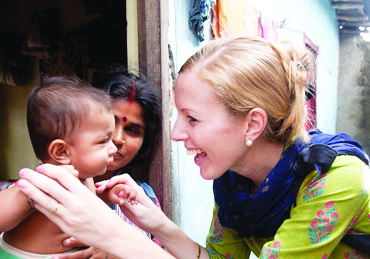Need For Primary Ear Care Workers
In view of immense disease burden and scarce manpower, the existing ENT manpower is already overburdened. Therefore role of skill based primary ear-care worker becomes vital for delivering essential ear and hearing care services.
By Dr Suneela Garg / Deeksha Khurana
In India, the estimated significant auditory impairment reaches up to 6.3% prevalence (moderate to severe hearing loss) out of the total population of 1.25 billion. It is important to note that nearly half of causes of hearing loss are preventable.Lack of awareness regarding importance of ear care is a major challenge in the country. People also have poor knowledge about the resources available for ear care. Myths and Misconceptions worsen the situation.In the Indian context, the common ear problems are ear wax (18.7%), Chronicsuppurative Otitis media (5.4%), dry perforation of Tympanic Membrane (0.6%), Congenital deafness (0.2%) and age related hearing loss (10.5%).
Also, there is inadequate manpower in the country for addressing ear and hearing care issues. In India, the doctor population ratio is skewed with only 0.7 doctor /1000 population as against WHO’s recommended ratio of one doctor per 1000 population. When it comes to ENT specialists, the situation worsens with there being only 6 ENT doctors per one million population.
In view of immense disease burden and scarce manpower, the existing ENT manpower is already overburdened. Therefore role of skill basedprimary ear-care worker becomes vital for delivering essential ear and hearing care services. A skilled primary ear care worker can play a significant role right from early identification of people with hearing loss to awareness generation, screening of patients to making adequate referrals.
The role of Primary Ear Care worker can be summarized under:
• Promotion of ear and hearing health by creating awareness through community-based actions including:
• Promoting and teaching healthy ear and hearing habits;
• Identifying the need for and means of early detection of hearing loss;
• Recognizing signs of hearing loss in infants, children and adults;
• Creating awareness of avoidable causes of hearing loss and ear disease;
• Managing common ear diseases and referring complicated cases;
• Providing and maintaining hearing aids, cochlear implants and other listening and signaling devices;
• Offering support services for hearing aids users.
Carry out public health actions through promotion and implementation of immunization, maternal and perinatal health care, and child health care.
Protection against excessive noise and improve the acoustic environment.
Promotion and enable identification of hearing loss in infants, children and adults. Refer cases of suspected hearing loss for hearing tests and ear check-ups.
Advocacy for appropriate ear and hearing services, including otological and audiological services, at health centres and hospitals as close to the community as possible.
Promoting the use of hearing aids and provide support services explaining the benefits and limitations of these devices.
Informing children and adults with hearing loss, family members and the general public of available options for the inclusion and integration of people with hearing loss in the community.
Train all teachers in the community in aspects of primary ear and hearing care, the impact of hearing loss and provision of an effective learning environment for children with hearing loss.
Ensure that the families of children with hearing loss understand the local policies relating to the education of such children.
Educate teachers about the special needs of students with hearing loss, including deaf students.
Create educational opportunities for children and students with hearing loss at preprimary, primary, secondary and higher levels of education.
Ensure the availability of non-formal and vocational training opportunities for people with hearing loss.
Develop and encourage training for speech and language development for persons with hearing loss.
Engage the local deaf community in the implementation of these activities.
Encourage and empower students with hearing loss who are seeking to undertake higher studies.
Basic examination to screen and recognize patients with common ear diseases (wax, simple foreign body removal, discharging ear etc.) and counsel & refer patients requiring further medical/ surgical care.
Undertake teleotology project for screening patients using a handheld mobile device and transfer the images for diagnosis by ENT specialist.
(The authors are from Department of Community Medicine, MAMC, Delhi)

